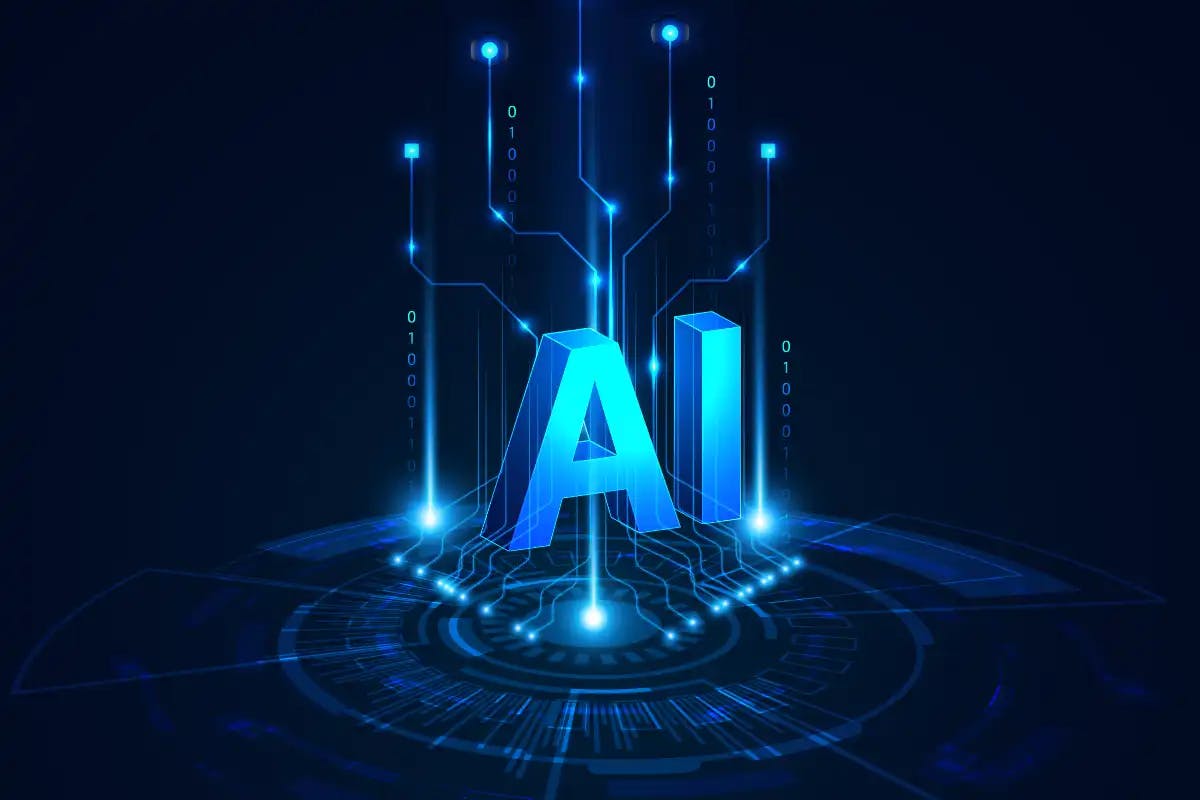


Every industry is undergoing a massive change because of Artificial Intelligence (AI), and that includes education too. The use of AI in EdTech has created engaging learning, automatic exams and tutoring via virtual assistant that have fundamentally changed the way education is done. In fact, 60% of educators are using AI tools for personalized learning and student management. However, among them, 35% asked questions like:
Nevertheless, the decision to use artificial intelligence tools in education is always difficult. It takes time and expertise to strategically plan where these tools will be used in the organization, make sure that they help in achieving the educational objectives, protect crucial students' data, and ensure that the investments have a worthwhile return. It is important to ask the right questions when making decisions in order to prevent waste of time and errors while adapting to the new environment.

The goal of this article is to enable decision-makers, for example, educators, administrators, or EdTech business owners, with key questions they should consider before integrating AI tools for education into their systems. Answering these questions allows organizations to make right decisions, get away from mistakes made by many people, and gain the utmost benefits that AI can provide.
Before incorporating AI into your EdTech platform, it is important to have a comprehensive understanding of your goals. A lot of educational institutions and businesses quickly jump on AI technology just because it is the latest sought-after technology. But when a meaningful purpose is absent, it can lead to the failure of the intended outcome. Every educational institution has its unique challenges, and AI can solve this problem. However, it is necessary to know what needs to be fulfilled by AI and the solutions it can provide.
There will be some institutions that may encounter the burden of increased classroom size and turn to artificial intelligence for personalized learning. Others may be trying to reduce the bureaucratic load and may require automation to make tasks such as grading and attendance tracking more efficient. The goal, therefore, should be identifying the problems that directly affect the education process and focusing on how AI can solve these problems.

Once you have laid down your requirements, it is important to evaluate the capabilities of the AI tool. Every AI tool has various capabilities that cover different areas of education such as personalization, automation, or predictive analytics. Getting to know the strong suits or the shortfalls of the AI solution is very important.
One of the main advantages of AI technology is the use of personalized learning, where AI adjusts to the individual needs of the students. For instance, AI-enabled applications such as Duolingo calibrate their content around the user's performance and problem areas. Such tools can lead to an improvement in student involvement because they take into account the student's learning pace and motivation.
Furthermore, the ability of the AI tool integration to process data is another crucial point. Educational data materializes in various ways, from student performance metrics to behavioral analytics and engagement statistics. The AI should not only be capable of handling large amounts of data but also be able to pinpoint the required information. Coursera is an example of this, they use an AI tool called IBM Watson to create personalized learning experiences by analyzing students' behavior and performance data in great detail.
Finally, smooth integration with existing systems, like your Learning Management System (LMS), which is already in place is essential. The AI tool should not only work independently but also communicate with your current infrastructure to avoid interruptions in the learning process. Lack of integration can lead to fragmented data and an ineffective learning experience both for the students and educators.
The AI tool implementation process in education is highly crucial in determining how well any project succeeds or fails. Simply installing an AI solution and launching it, will not help here. It requires aligning the AI tool with institutional workflows and processes, involving every user in duly prepared training sessions, including teachers and learners.
The set of AI tools in education that are difficult to implement can make the educational experience a lot worse. A successful AI application should be able to be installed without any misunderstandings by giving clear instructions, a fixed delivery term, and full support from the supplier during the installation.
After the implementation, the next problem will be usability. The AI app should be very user-friendly. For instance, platforms like Quizlet have introduced AI-driven functionalities into their teaching process, for example, Q-Chat, which is the component that takes care of the personalized teaching by students at the same time is very friendly to the students.
Yet another point to take into consideration would be the quality and the type of training that is being provided by the AI tool’s vendor. An exhaustive training course enables educators and administrators to best utilize the tool’s full potential. The vendor must offer ongoing assistance and resources like webinars, how-to guides, and a responsive customer support team to the educators.
Data privacy is one of the most important aspects in the field of education when it comes to the sheer scale of the amount of sensitive student data. With Edtech AI solutions processing and gathering data in bulk, educational institutions need to make sure that their selected tools will meet the requirements of local and international regulations.
Student data consists of information like names, postal addresses, and participation ratings, among other things. If this data gets into the wrong hands, serious legal and moral troubles might follow. Thus, the AI tool should have a high level of encryption to secure the data. Also, you might want to inquire whether the company has an inspection procedure and updating policy in place to constantly maintain the secure system.
The tool’s capability of ensuring the transparency of the information regarding how data is utilized and kept is also equally important. It is essential for educational institutions to have a full view into the ways AI tools operate and receive the data of the learners, ensuring also the data is not shared with a third party without explicit consent from the owner. From an idealistic standpoint, institutions that give priority to data safety, not only save their learners but also build trust with parents and guardians.
Overcome every AI EdTech challenge with Codiste’s trusted expertise.
One of the most crucial components in choosing the integration of an AI tool is the total cost of the same. The full cost of ownership is not limited to the initial licensing fee only. You must also consider the costs of implementation, AI training and support, ongoing maintenance, and possible upgrades. Organizations that operate under tough budgeting conditions need to cautiously evaluate the associated expenses and compare them with the anticipated gains.
At first, the initial investment may seem high, but the AI tools that improve their students' achievements, save time and ensure less paperwork for humans can provide them with a huge return on their investment in the end.
Evaluating ROI by understanding how the tool will affect your institution's short-term and long-term performance is the central point of the whole matter. Will it lead to increased student retention or better academic performance? Will your students be tempted to enroll by the promise of a more advanced, AI-powered learning experience? In-going through these factors you will be able to figure out if the AI tool is a wise investment.
The importance of choosing the right vendor is similar to the need for choosing the right tool. A trustworthy vendor should have a background in the successful implementation of education technology. It is one of the ways that a vendor’s credibility can be evaluated. They can understand the problems encountered and the expectations of schools/educational institutions.
Reliability involves the tool’s initial functionality and includes the vendor’s commitment to continuous support and updates. Artificial Intelligence is a quickly developing field. Thus, the best custom eLearning Development teams are those who are continuously looking for new and more efficient ways to come up with the most recent trends that artificial intelligence has introduced. A supplier that has regular software updates and is quick to react to customer suggestions is more likely to deliver long-lasting benefits.
Moreover, student support services should also be given priority in the selection of a vendor. It is a common situation in schools where they need quick help when technical matters occur, such as during an exam or a project. This is where suppliers who provide round-the-clock chat support, as well as a personal account manager, can help remove hiccups and system issues altogether.
Scalability is the main issue in the educational sector. This is particularly true as student numbers increase or the institutions introduce new program offerings. The AI tool you will select should not just be able to adapt to the growth of your institution, but also it should not lose its effectiveness or performance. Units that have 100 students can be perfect for their functionality, but units that have 1,000 students or more may experience non-optimal performance. Thus, make sure that the AI solution supports the easy scaling of it.
The AI tool should be flexible enough to consider future technological innovations. Even now, such high-tech inventions as VR, machine learning, and AR are subject to being improved continuously. That is why your chosen AI tool should be such that it comfortably becomes a part of future innovations so that your institutions can keep up with the trend.
A scalable and versatile AI-based system can prepare your EdTech platform effectively and secure it against the EdTech challenges that arise from the changing educational requirements and technological evolutions.
Finally, an AI tool's effectiveness must be evaluated by the way it is utilized in the systems as well as the real results it brings about, and not just as a standalone parameter. The main aim of adopting an AI tool in education is to make the learning experience and outcomes of students better. So the evaluation of the AI tool is of great importance.
Setting up key performance indicators (KPIs) would let you judge whether the AI tool has been successful. The metrics such as student engagement levels, academic performance, and teacher productivity in combination provide a clear picture of the AI tool's performance.
Another good approach is to get direct feedback from both students and educators. Regular surveys or focus groups are a good way to get qualitative information on AI tool performance as well as the user's barriers and ideas for improvement. We found that the feedback loop is the most critical for improving the tool and it is necessary to make sure that it always provides value.
The application of AI in the field of educational technology has huge potential. It allows the personalization of learning, making the working hours of the schools more effective, and helping the process through the analytical use of the data.
In spite of this, AI is a tool that should be assessed properly before implementation. The use of Artificial Intelligence in the education sector holds promise, the application of which needs to be considered based on the identified needs of an educational institution. Once they take into account the major factors such as the systems' operability, data security in AI tools, price, expansibility, and a vendor's reliability, the decision-makers can make the right choices for the successful implementation of AI.
In the future, AI's presence in EdTech will be even more dominant given the AI development of machine learning, natural language processing, and predictive analytics. Schools, colleges, and universities that choose and implement the right tools will most likely be the leaders in their field.
AI functionalities in education do provide some help, but only if it is applied appropriately and cautiously with the help of a renowned partner like Codiste, a leading custom eLearning development company in USA. Educational institutions will be able to master AI and its power with the help of the dedicated technical team of Codiste. Contact with our experts for discussing your AI EdTech tools requirements and cost of AI tools in EdTech.




Every great partnership begins with a conversation. Whether you’re exploring possibilities or ready to scale, our team of specialists will help you navigate the journey.